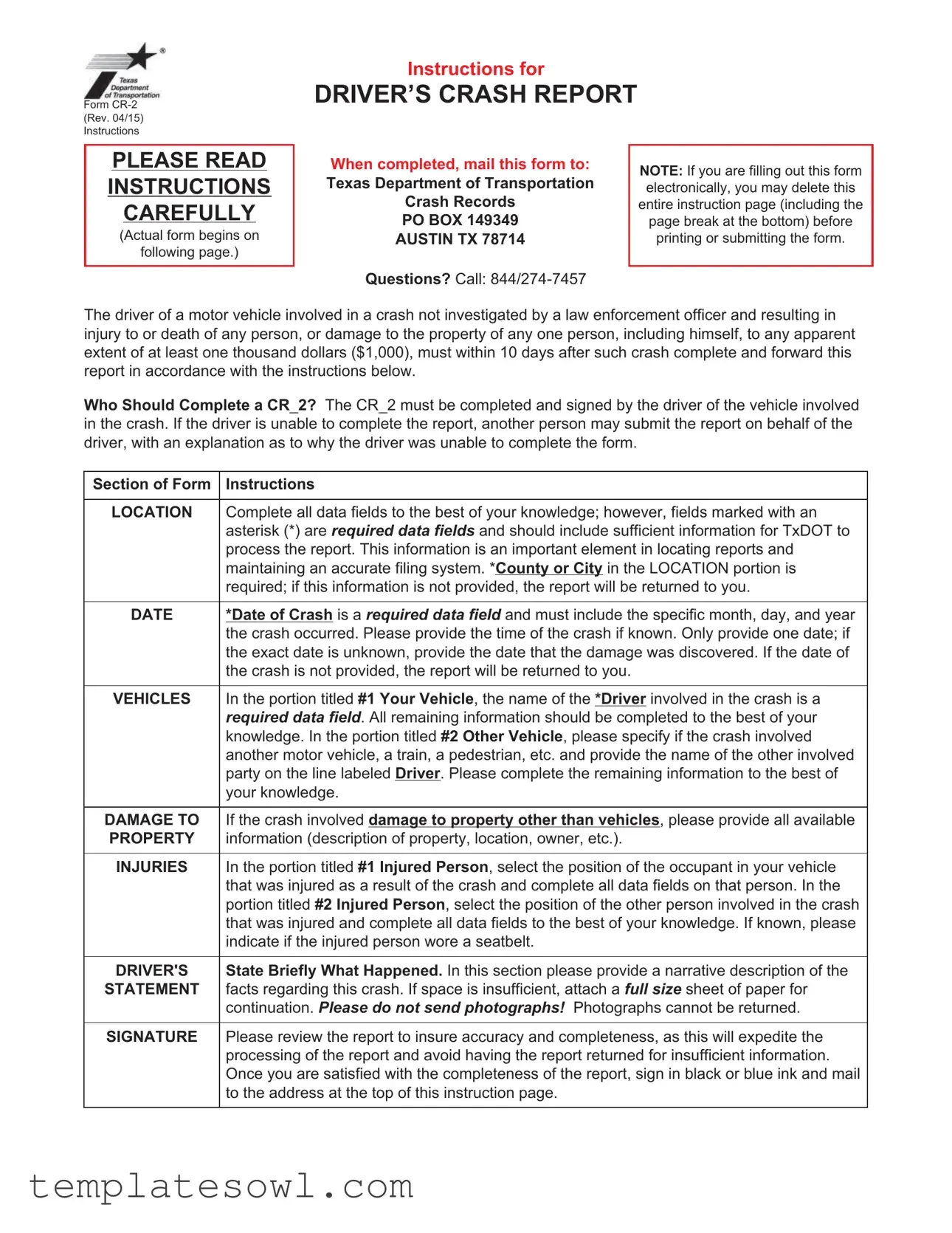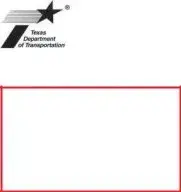Filling out the Texas Blue form correctly is crucial for accurately reporting vehicle crashes. Despite an intention to provide complete and accurate information, individuals often make mistakes that can lead to delays or complications in processing the report. Understanding these pitfalls can significantly enhance the accuracy of the report.
One common mistake is neglecting to complete all required fields, particularly those marked with an asterisk (*). For example, the county or city where the crash occurred is mandatory. If this information is omitted, the form will be returned, causing unnecessary delays. Ensuring that all required fields are filled out completely is essential for smooth processing.
Another frequent error involves the date of the crash. The report requires the specific date, including the month, day, and year. People sometimes mistakenly provide just a year or an approximate date, which can lead to a return of the report. If the exact date is unknown, it is advisable to record the date of damage discovery instead.
Moving to vehicle information, many people forget to include details for both their vehicle and any other vehicles involved in the crash. While details about one’s own vehicle are usually provided, information regarding the other vehicle may be incomplete or inaccurately represented. This oversight can result in missing contact information for the parties involved.
Inaccuracies can also arise in the section addressing detailed descriptions of injuries. When reporting injuries, individuals sometimes fail to select the appropriate position of the injured person, such as driver or passenger, or neglect to provide essential details such as whether a seatbelt was used. Such omissions can hinder the invoice of precise medical documentation later.
Additionally, many people overlook the need for a clear, concise narrative in the driver’s statement section. A vague description of events may lead to misunderstandings and misinterpretations regarding the circumstances of the crash. A well-articulated account of what transpired is key to ensuring the intent of the report is communicated accurately.
Moreover, the signature field deserves special attention. Some individuals forget to sign their reports altogether or use an ink color other than black or blue. Without an appropriate signature, the form cannot be processed, which further extends the time it takes for the report to reach the relevant authorities.
Finally, individuals frequently do not review the completed report before submission. A simple review could prevent many errors, as it allows the person to double-check for any missing information or mistakes. By taking this extra step, individuals can help ensure that their report is processed efficiently and accurately.


